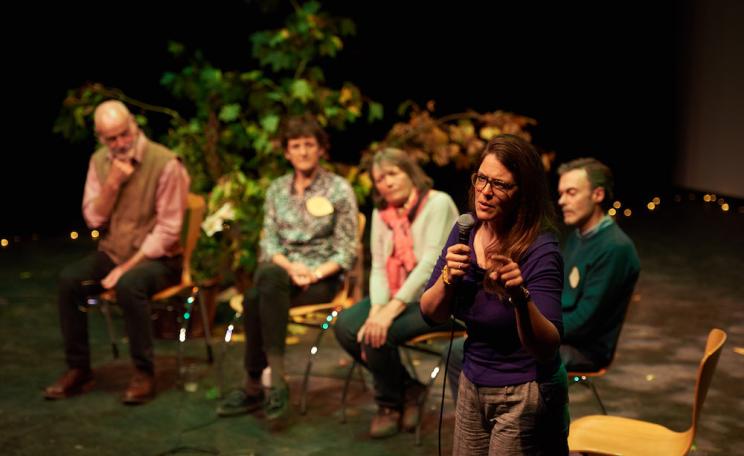Everything living has an individual shape and form, everything makes it's presence felt in some way, leaves a mark, some trace - Venetia Norris
Drawing is one of life's intangible small pleasures. Like the slow process of uncorking a wine bottle or wet shaving with a bristle and razor, there's very little to it, but the simple action is, well, just very satisfying. While sketching, the use of tried-and-tested, low-tech tools combined with the chance to stare at things a bit longer than we normally would, is what lifts us. Add the bonus of producing artwork that also gives happiness to others and it becomes clearer to see why drawing is coming back into fashion.
The Drawing Society is reflecting this surge in interest with an exhibition of beautiful work at the Bankside Gallery, London from 6-18 June. The Society of Graphic Fine Art, as the Drawing Society is now known, was set up in 1919 to promote the talents of draughtsmanship in all its forms. Its members' latest work embraces this aim with artists skilfully and thoughtfully showing off their ability to draw, paint and create.
In its purist form, drawing is marking down the junctions of observed lines. The ecology movement does the same thing, joining up the dots of our under-strain, but interlinked environment to create forceful arguments. I believe the SGFA is the perfect home for expressing environmental concerns through pencil and paint. My works on show are studies of extinct, but now re-introduced Large Blue butterflies. The paintings explain the incredibly convoluted life cycle of one of our most alluring insects, now breeding again in pockets of chalky English countryside.
It's not a surprise to see the natural world featuring so prominently on the South Bank. Many of the 85 artists aim to capture the environment on paper. Tamlyn Blasdale-Holmes's hypnotic knot work draws you in to an intricate and intriguing world. He says "For a number of years I worked in conservation and this grew my interest in drawing pieces with strong animal and human rights subjects. Because of the gravity of some of the issues I tackle I often add a glint of wry humour in the hope that this will lighten but reinforce my message."
Louisa Crispin creates delicately detailed studies of bees and plants. She is entranced by the cycle of growth and decay. She's says "It's quiet in my studio and distanced from the world. I try to look ever closer at plants, insects and birds." Her work captures texture, shadows, silhouettes and movement with carefully-observed marks and tone.
Plant life also features in Beginnings Venetia Norris's hand finished lithographic print. As part of the printing process Norris draws on limestone. She explains "Everything living has an individual shape and form, everything makes it's presence felt in some way, leaves a mark, some trace. Using just the tip of my pencil, graphite and ink I try to reveal the intricate layers, the sensuous interiors, the infinite variety and texture of a leaf, a stem, or a petal."
Susan Poole's work is crafted from her academic fine art and archaeological background. In her work on show she says: "The form, colour and surface texture of animals I study embody particular personal meaning to me, layers of which might be uncovered like archaeological strata."
Everything living has an individual shape and form, everything makes it's presence felt in some way, leaves a mark, some trace - Venetia Norris
After training as a painter in the 1960s Myrtle Pizzey's printmaking now seems to her like an extension of the process of observing and recording. "The tactile task of cutting a relief block holds great appeal. It helps to clarify my own thoughts and responses to the process. Before I draw and record my surroundings in Somerset, I have observed the area at different times of day in various climatic conditions over a year or more. The process of creating a print from conception to realization may take three or four months."
Next door to Bankside in Tate Modern, installations, film and sculpture may be the current darlings, but even the most challenging of contemporary art is born in a well-thumbed sketchbook. In our digital-saturated lives many yearn for more of the simple marking of pencil and paint on paper. As we've found all over the world, our ancestors 40,000 years ago liked to paint in caves. Drawing has never really gone away and I urge you to see some of the finest examples of the practice still going on, but in the more comfortable Bankside gallery
The free Bankside Biennial SGFA exhibition is open from 11am-6pm from 6-18 June. www.sgfa.org.uk www.banksidegallery.com
This Author
Gary Cook is a Conservation Artist and Arts Editor for the Ecologist. More on his work and how to contact him here:
My Antarctic diary published in The Ecologist
Online: cookthepainter.com
Twitter: twitter.com/cookthepainter
Instagram: instagram.com/cookthepainter
Society of Graphic Fine Art: sgfa.org.uk/members/gary-cook/
Blog: cookthepainter.com/blog
The Ecologist: tinyurl.com/zpkefjc







